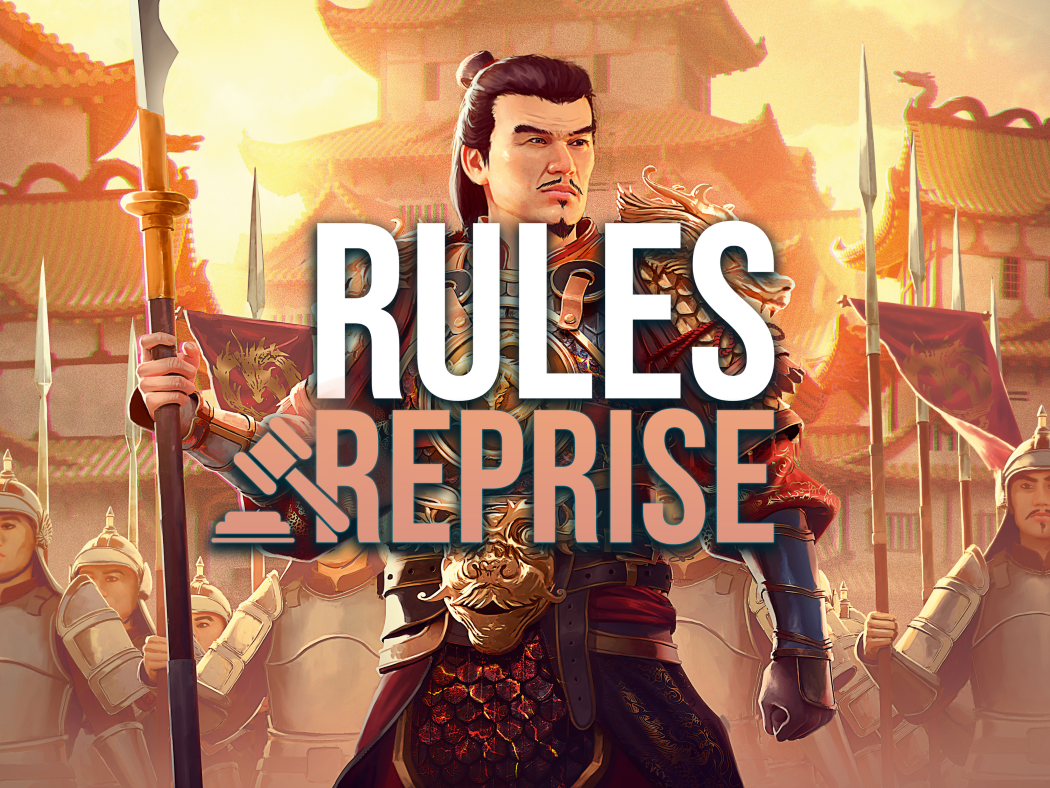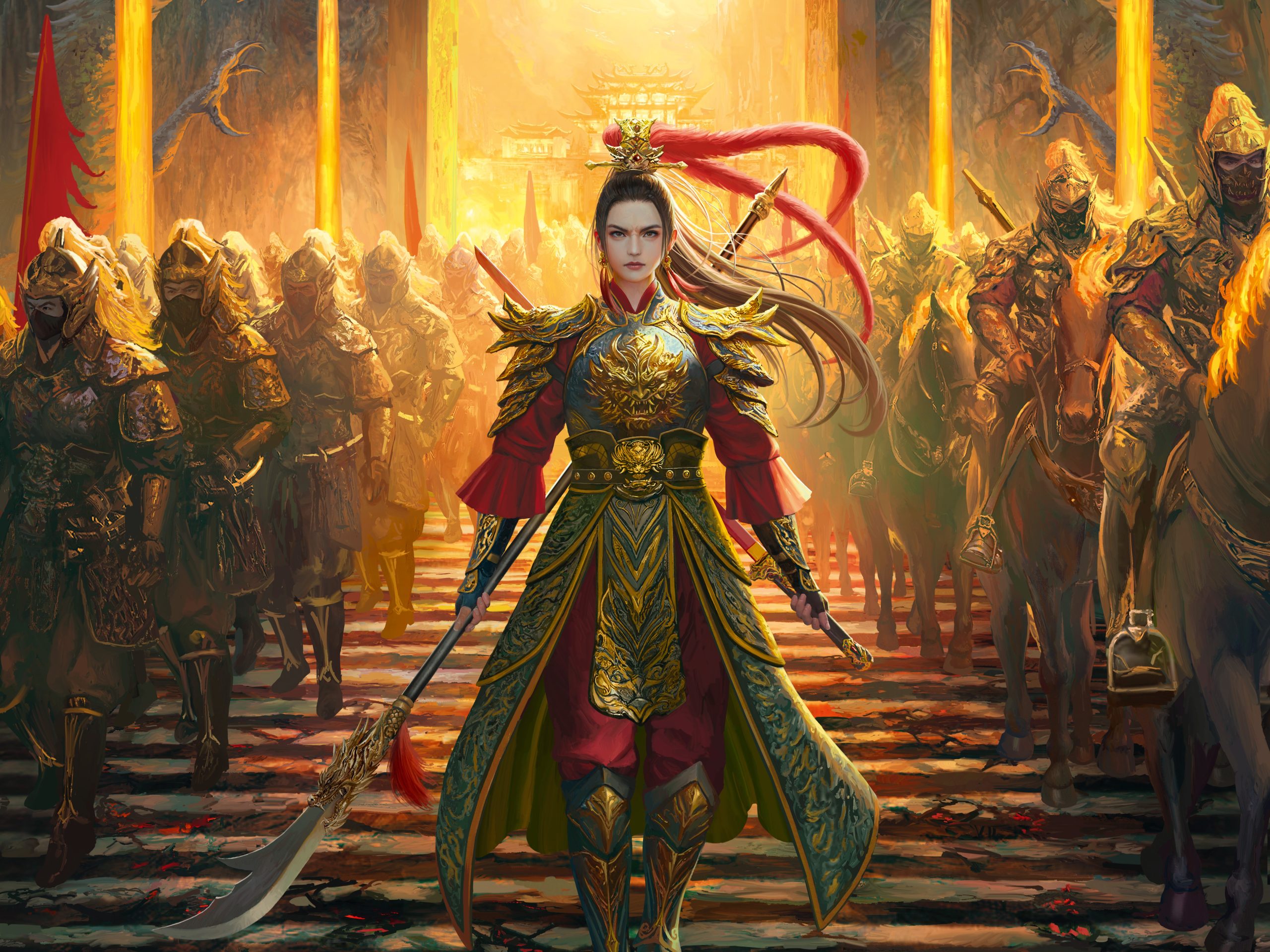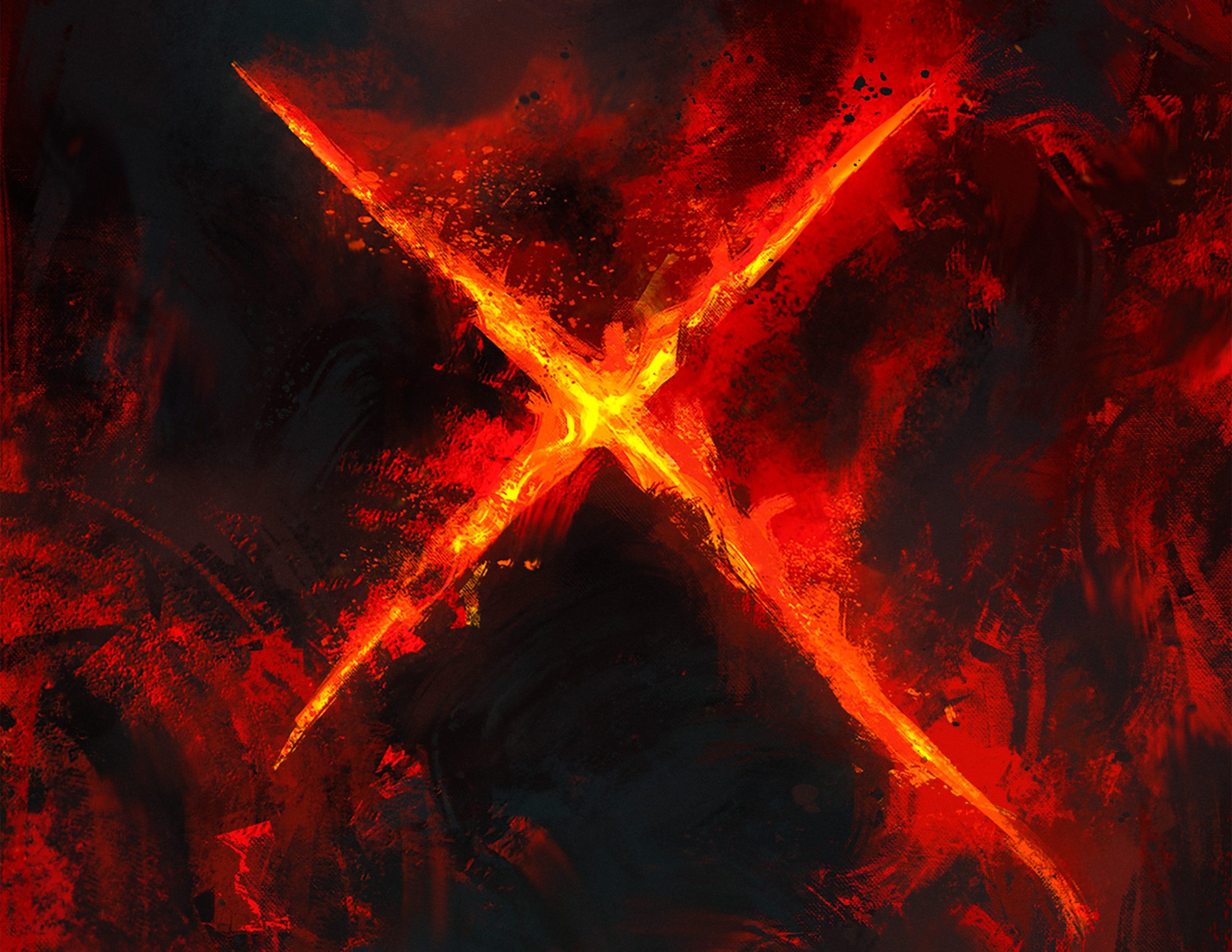As the Dracai march across the fiery plains of Volcor to hunt the Emperor’s killers, the Rules Team is back to help you navigate the chaos and hunt down your wins during World Premiere weekend of The Hunted in Prague and at Pre-Release events near you! Joshua Scott and Niccolo Paqueo are back to discuss some of the new rules introduced in the set and to reacquaint us with the older mechanics returning with a vengeance. You’ll want to mark these down: Don’t let the hunter become the hunted.

How does Marked work?
Marked is a new status for a hero, and the basic points come down to:
- A hero is marked when an effect makes that hero marked.
- A hero stays marked even if they become another hero (e.g. Arakni, Shiyana) or revert back.
- A hero becomes unmarked (not marked) immediately when they are hit or an effect unmarks them.
- Marked has no other function other than being referenced by effects in the game.
If you become another hero (a copy-like effect), you continue to be marked. This means if you’re marked and you become an Agent of Chaos or return to the brood, you’ll continue to be marked. However, if you transform or otherwise replace your hero (Levia, Redeemed, Teklovossen, the Mechropotent), your new hero will not be marked.
It is important to note that when you hit a marked hero, it does not create a trigger that needs to resolve before the hero becomes unmarked – the hero is simply unmarked immediately. This is important to remember when working with interactions that include flicking daggers and on-hit triggers.
Example 1: Tyler is playing as Cindra. Tyler plays Proclaim Vengeance, and marks Nic. Nic is now considered marked until they are hit. Tyler attacks Nic and Nic defends and doesn’t take any damage. Nic plays their turn. On Tyler’s next turn, Nic is still considered marked. Tyler attacks Nic and Nic doesn’t defend and takes a hit. Nic is no longer considered marked and Tyler creates a Fealty token.
Example 2: Tyler is playing as Cindra and Nic’s hero is marked. Tyler attacks Nic with Blood Runs Deep, which triggers and each of two daggers Tyler controls hits Nic. Cindra triggers only once and creates a single Fealty token because the first dagger to hit will cause Nic to be immediately unmarked before the second dagger hits an unmarked hero.
Finally, triggers that care about hitting a marked hero do not retroactively trigger if you mark a hero after hitting – they have to be marked at the time the hit occurred.
How do the Agents of Chaos work?
Arakni, Web of Deceit (and their adult counterpart Arakni, Marionette) has a triggered ability that allows them to become a random Agent of Chaos. The Agents of Chaos are a set of 6 Chaos Assassin Demi-Hero cards with various abilities, but all share an ability that reverts your hero back to your base hero (the hero you started with).
When Arakni becomes an Agent of Chaos, you’re replacing all of the properties of Arakni with the Agent of Chaos (your life total stays the same). As an Agent of Chaos, you have new hero abilities, including an ability that triggers at the end of your turn that reverts your hero back to Arakni with return to the brood.
Some key aspects of the Agents of Chaos include:
- They are not tokens (they do not have the token type), but do come with token-rarity.
- They do not need to be included on your card-pool registration sheet (decklist).
- You must have all 6 unique Agent of Chaos cards if your hero can become one. This is just as important as having your hero card.
Tyler is playing as Arakni, Web of Deceit and Nic’s hero is marked. At the beginning of Tyler’s end phase, Arakni, Web of Deceit triggers and resolves. Tyler rolls a die to determine the random Agent of Chaos, rolls a 1, and his hero becomes Arakni, Black Widow. Nic plays out their turn. During Tyler’s next turn, at the beginning of Tyler’s end phase, Arakni, Black Widow triggers and resolves. Tyler’s hero returns to the brood and reverts back to Arakni, Web of Deceit. If Nic is still marked at the end of Tyler’s following turn, Tyler’s hero will become another Agent of Chaos.
Can I use Fealty to overcome “may only play cards that are Draconic” restrictions?
Yes.
The effect of Fealty (and similar effects like Brand with Cinderclaw) applies to cards AFTER they are announced to be played, but BEFORE the legality of playing that card is checked. The order for playing a card goes:
- Announce – This is where the effect is typically applied
- Declare Costs
- Declare Modes and Targets
- Check Legal Play – This is where the talent of the card is checked
- Calculate Asset-Costs
- Pay Asset-Costs
- Calculate Effect-Costs
- Pay Effect-Costs
- Play
This means that you can make a card Draconic so that it will overcome the effects of “may only play cards that are Draconic”.
Tyler controls 1 Fealty token. Tyler activates and resolves Coat of Allegiance, then activates and resolves their Fealty token (an instant ability), and finally attacks Nic with Tag the Target. Because Tag the Target gains the Draconic talent from Fealty when it is played, it is legal to play under Coat of Allegiance’s effect.
If I flick a Draconic dagger, do I still control the Draconic chain link?
Yes.
A chain link takes on the properties of the attack. If the attack is removed from the combat chain, the chain link will remain and last known information is used to determine those properties. This means that you can get full use from your Draconic daggers by attacking, then flicking, and still having the chain link count towards the total number of Draconic chain links you control.
Tyler is playing as Cindra. Tyler attacks Nic with Kunai of Retribution, another Kunai of Retribution, and finally Blood Runs Deep. Both of Tyler’s Kunai of Retributions are destroyed as part of the flicking effect. Tyler currently controls 3 Draconic chain links – chain link 1 and 2 are still Draconic from Kunai of Retribution, despite the fact that the daggers have now been destroyed. Moreover, Tyler can activate Cindra’s instant activated ability, which will cost them no resources as they control 3 Draconic chain links.
If I flick Mark of the Huntsman at a hero, can I mark them?
Yes.
Flicking effects typically destroy the dagger after they have hit, but before the trigger resolves. Mark of the Huntsman specifically uses the phrase “you may choose to destroy this and mark them” to ensure that if you choose to, the dagger is destroyed and the hero is marked, regardless of whether the dagger is already destroyed (e.g. from the flicking effect) or the hero is already marked (from another effect).
“You may choose” is functionally different from “you may” in the following ways:
You may destroy this. If you do, mark them.
- You can only do this if the dagger can be destroyed. This would prevent you from marking a hero by flicking Mark of the Huntsman.
You may mark them. If you do, destroy this.
- You can only do this if the hero isn’t marked. This would prevent you from destroying the dagger if the hero is already marked (i.e. to make space to equip Graphene Chelicera)
You may destroy this and mark them.
- You can only do this if the dagger can be destroyed AND the hero isn’t marked. Both things must be possible for you to do this pair of optional effects.
You may choose to destroy this and mark them.
- You can do this regardless of whether the dagger can be destroyed and/or whether the hero is already marked.
Tyler is playing as Arakni, Web of Deceit. Tyler attacks Nic with Bite and chooses to flick their Mark of the Huntsman at Nic. Nic is dealt 1 damage and Mark of the Huntsman triggers from hitting and then is destroyed. The trigger resolves and Tyler chooses to destroy Mark of the Huntsman and mark Nic. Because Mark of the Huntsman is already destroyed, the destroy effect does nothing; however, Nic is still marked from resolving the triggered effect. Now Tyler’s Bite gets +1{p} because it is attacking a marked hero.
Can I attack twice with the “same” dagger using Cindra?
Yes.
When a dagger is destroyed and equipped again with Cindra’s effect, it is considered a new dagger with no previous history. This means that the once-per-turn limit has been reset and you can attack with it again.
Tyler is playing as Cindra. Tyler attacks Nic with Kunai of Retribution. Tyler closes the combat chain, and the Kunai of Retribution is destroyed. Tyler activates Cindra’s ability (paying 3{r}), equips the Kunai of Retribution, and attacks Nic another time with the newly equipped Kunai of Retribution.
Does Take Up the Mantle keep any buffs on the attack?
Yes (mostly).
The fundamental way that Take Up the Mantle works is you’re keeping the same targeted card on the combat chain, but changing values printed on the card (i.e. changing its printed properties) to those printed on the banished card.
In addition, printed abilities on the targeted card are lost, but the new printed abilities of the card it copies become functional. On-play and on-attack triggers of the “new” card it becomes will not trigger because you’ve already passed the point in combat that would trigger them (Layer and Attack step respectively – Take Up the Mantle can only be played in the Reaction Step).
Lastly, any effects that applied to the card beforehand will continue to apply, even if the values change – This means cards like Toxicity, Just a Nick, and even Take Up the Mantle’s own +{p} effects and gained triggered abilities will continue to apply to the attack when it changes. The only exception are effects from static abilities which are re-evaluated (there are no relevant examples for Assassin yet).
Tyler plays Toxicity then attacks Nic (who is marked) with Isolate. In the Reaction Step, Nic plays and resolves Take Up the Mantle, banishing Bite. The Isolate becomes a copy of the banished Bite and retains its gained triggered ability from Toxicity; however, the “when you attack” ability on this copied Bite will not trigger because players are in the Reaction Step, which is past the point of when it would trigger.
Tyler attacks Nic (who is marked) with Isolate (blue), which has 1{p}. During the Reaction Step, Tyler plays and resolves Just a Nick, choosing both modes, bringing Isolate to 6{p}. Tyler then plays and resolves Take Up the Mantle, banishing Double Trouble (red). The Isolate becomes a copy of Double Trouble and now has 13{p}: 3 base, +2 from its own static ability, +5 from Just a Nick, +3 from Take Up the Mantle. It also has two triggered abilities: 1 from its own static ability, and 1 from Just a Nick.
How does Kiss of Death work?
Where do I start…
Kiss of Death is an attack action card with the subtype “Dagger”. This means that effects that can target, select, or otherwise apply to daggers can do so with Kiss of Death while it is also considered an attack action card. Unlike other daggers, Kiss of Death does not have the “weapon” type or “1H” subtype. Effects that target, select, or otherwise apply to weapons do NOT do so with Kiss of Death, and Kiss of Death cannot be equipped as a dagger to your weapon zone.
The more complicated interactions come in with flick effects. You can flick Kiss of Death with most effects because they care about daggers, not weapons. In short, if Kiss of Death hits with a flick effect, it counts as an attack action card hitting. In other words, if something would trigger from Kiss of Death hitting, it will also trigger when Kiss of Death hits from flicking it (including any gained abilities that would trigger).
In addition, if Kiss of Death was an attack on a previous link of the combat chain when it is flicked, it counts as an attack hitting. This is a unique interaction and does not apply to other daggers like Graphene Chelicera, because in those cases you’re flicking the source of the attack (the dagger), not the attack itself.
Tyler has become Arakni, Black Widow. Tyler plays Toxicity then attacks Nic with Kiss of Death. During the Reaction Step Tyler activates Arakni, Black Widow, giving Kiss of Death +3{p} and an on-hit triggered ability, then activates Snapdragon Scalers to give it go again. Nic plays defense reactions and Kiss of Death does not hit. Then, Tyler attacks Nic with Bite, and flicks the Kiss of Death on the previous chain link. Kiss of Death deals 1 damage to Nic (through Bite’s effect) and hits, triggering the on-hit effects from Kiss of Death, Toxicity, and Arakni, Black Widow. Nic loses 1{h} from Kiss of Death, loses 5{h} from Toxicity, and banishes a card from their hand.























